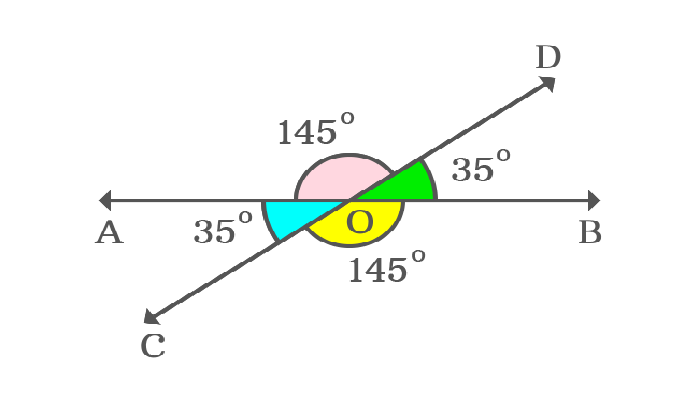Vertical opposite angles emerges when a couple of points meet each other at a single point. Both the angles would be equal to each other. What it means is if a couple of two lines intersect or cross each other, four angles are formed. A couple of angles may be opposite to each other, as they are known as vertically opposite angles. It also goes by the name of vertically opposite angles, since they would be lying opposite to each other.
Vertical opposite angles and their details
When a couple of lines intersect each other, four angles are formed. In a fact a couple of non- adjacent angles emerge. Such pair of angles is referred to as vertical angles. It is known as a pair of non- adjacent angles, when a couple of straight lines intersect. Such angles are located from one another in the corners of X which is a combination of two lines. It also goes by the name of vertically opposite angles, since they situated opposite to each other.
The theorem of vertical angles
The theorem of vertical angles indicates that a couple of vertical opposite angles is formed when a couple of vertical angles intersect each other, and would be concurrent to each other. There is a need to be aware about vertical theorem and its features.
Are vertical opposite angles concurrent and supplementary?
When a couple of straight lines intersect each other, a pair of vertical angle is formed. Such angles are concurrent and equal. These angles are concurrent, as a couple of pairs of non- adjacent angles. It is formed by intersect two lines that would be superimposing upon each other.
If the sum of a couple of angles is 180 degrees, it is known as supplementary angles. If there arises a situation, a vertical angle is a right angle that would be equal to 90 degree then the vertical angles would be 90 degree each. Hence the sum of the angles would amount to 180 degree. Though in such cases it can be termed as among the type of angles, vertical opposite angle would be supplementary. It could be noted that in some special cases vertically opposite angles could turn out to be supplementary. Otherwise in each of the cases the value of the vertical angle would be less than 180 degree as they may not be considered to be supplementary.
Could the vertical angles turn out to be right angles?
A vertical angle can be termed as right angle. When a couple of opposite vertical angles measure to 90 degree each then the vertical angles turn out to be right angles. It may be observed from the x axis and y axis relating to a particular Cartesian graph.
How is it possible to measure the value of a vertical angle?
When you are solving such cases, first and foremost we need to measure the parameters properly. If you find an angle that is given next to the vertical angle, it would be easy to figure out the value of a vertical angle where you subtract the value from 180 degrees. Since it is proved in the domain of geometry that a vertical angle and an adjacent angle would be supplementary at 180 degree to each other.
Vertical angles tend to be opposite each other, whereas an adjacent angle would be the ones that would be the ones to each other. Hence vertical angles may be adjacent to each other. All such information can be obtained from the website Cuemath which is one of the best when it comes to your maths and coding needs.
